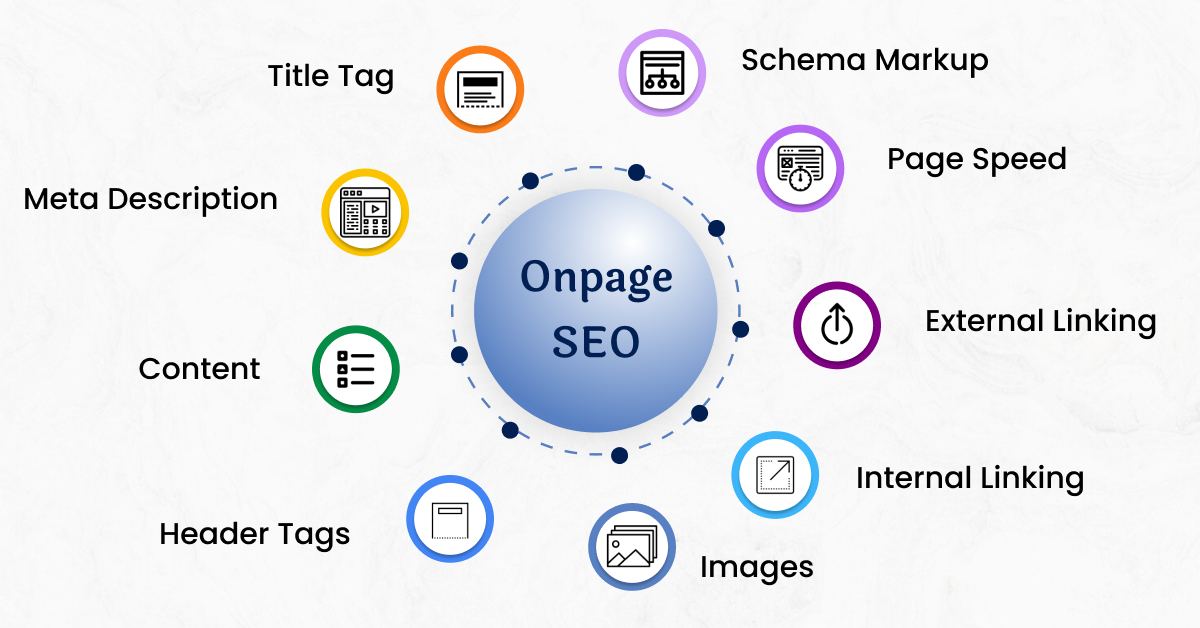
On-page SEO is a powerful tool to attract a steady stream of visitors directly to the website, potentially converting them into customers.
What makes it so incredibly powerful is that it’s entirely within your control. You determine the focus and objective of each page. You choose who your target audience is. And you select the keywords and phrases you want to prioritise.
While it can be empowering, many business owners find the entire process to be quite daunting at the same time. Because of this reason, many prefer working with experts providing SEO services Australia to upgrade their on-page SEO strategy.
If you’re starting and unsure where to begin, we have prepared a guide that can help you understand the basics of on-page SEO optimisation.
Understanding On-Page SEO
On-page SEO, also known as on-site SEO, involves fine-tuning various elements on your website to improve its ranking in search engines and drive more traffic. These elements include content, site structure, and HTML tags.
Google’s algorithm evaluates your website based on three primary aspects –
- On-page SEO covers the elements on your page that help search engines in crawling and indexing it.
- Off-page SEO involves activities like social sharing and external linking.
- Technical SEO includes aspects not covered by on-page and off-page SEO, such as structured data, mobile optimisation, and site speed.
Why Does On-Page SEO Matter?
On-page SEO is crucial because it communicates to Google what your website is about and how it offers value to visitors and customers. It’s about making your site appealing to both the search engine and visitors.
Simply creating and launching a website isn’t enough. You also need to optimise it for Google and other search engines to rank well and attract new visitors.
The term “on-page” SEO comes from the fact that the adjustments you make to optimise your site are visible to visitors right on the page, which isn’t quite the case with technical and off-page SEO elements.
Since every aspect of on-page SEO is under your control, it’s essential to get it right.
| On-Page SEO Elements – What Are They? |
|---|
| Keywords |
| Page Titles |
| Headers |
| Visual Content |
| Image Alt-Text |
| Meta Descriptions |
| Page URLs |
| Structured Markup |
| Internal Linking |
| Site Speed |
| Mobile Responsiveness |
Steps to Optimise Your On-Page SEO – A Checklist
When you start working on your on-page SEO, here are a couple of things that you absolutely must keep in mind –
#1 – Including Your Keyword in the URL
Make sure your target keyword appears in your URL so that both users and search engines can easily understand what the page is about.
Here are some tips for creating SEO-friendly URLs –
- Keep it clean: Remove any unnecessary words.
- Stay focused: Use just one or two keywords.
- Secure your site: Use HTTPS if possible, as Google considers it to be an important ranking factor.
#2 – Optimising the Page Title
Create a clear and descriptive title that incorporates your target keyword and accurately reflects the content of your page.
Here are some best practices for crafting an effective page title –
- Keep it concise: Aim for under 60 characters to ensure your title displays properly in search results. While Google doesn’t have a strict character limit, titles are typically cut off at around 600 pixels, so keeping them short and sweet prevents truncation.
- Avoid keyword stuffing: Focus on making the title relevant, not overloaded with keywords.
- Use proper capitalisation: Skip the all-caps; it’s more readable and professional.
- Include your brand: Consider adding your brand name to the title.
#3 – Using Headers
Structure your content with header tags to enhance readability and boost search engine optimisation. It’s also necessary to incorporate important keywords naturally into your headers, but use different ones from your page title. Place your most critical keywords in the <h1> and <h2> headers.
#4 – Adding Keywords in the Body
Beyond the URL, headers, and title, it’s essential to place your keyword into the body of your content. Spread them throughout your webpage where it fits naturally.
While keywords are crucial for SEO, it’s important to avoid keyword stuffing—repeating keywords excessively to try and manipulate search rankings. Such a strategy can backfire, harming your SEO efforts.
Not only does keyword stuffing create a poor reading experience, but modern search engines are highly sophisticated, so they can detect and penalise content that appears unnaturally packed with keywords.
#5 – Incorporating Visuals like Images and Graphics
You must improve your content by adding engaging visuals, such as images, videos, and graphics to it. These elements not only break up large blocks of text but also make your content more appealing and easier to digest. Plus, visuals can attract image search traffic, offering another avenue to bring visitors to your site.
When you have to optimise images for on-page SEO, make sure they’re properly compressed to improve loading speed, use descriptive filenames, and include informative alt tags. These steps will improve the user experience and boost your pages’ visibility in search engine results.
#6 – Adding Meta Descriptions
You will also need a persuasive meta description that captures the essence of your page’s content and entices users to click through from the search results.
Here’s what makes a great meta description –
- Keep it concise: Aim for under 160 characters, though Google sometimes displays longer descriptions.
- Include your keyword: Make sure to incorporate your main keyword or phrase.
- Write compellingly: Use a complete sentence (or two) that grabs attention.
- Avoid unnecessary symbols: Skip alphanumeric characters like —, &, or +.
#7 – Optimising Visuals on the Page with Alt-Text
As mentioned earlier, optimising your visual content with alt-text is essential. Be sure to include your keyword in the alt-text, as this enhances your page’s SEO and increases the chances of your images ranking in search results, such as image carousels or search engine image pages.
Here’s what to keep in mind when writing image alt-text –
- Be descriptive: Clearly describe what the image is showing.
- Ensure relevance: Make sure the alt-text is contextually related to the surrounding content.
- Keep it brief: Aim for under 125 characters.
- Use keywords wisely: Include keywords, but avoid overloading them.
#8 – Including Internal Links
Adding internal links to your content helps search engines understand the relationships between different pages on your website, improving overall SEO.
To effectively add internal links –
- Choose relevant anchor text: Select clickable text that clearly describes the content of the page you’re linking to.
- Identify the target page: Pick a page that is contextually related and adds value to the current content.
- Place links thoughtfully: Distribute links throughout the page in a way that enhances the user experience without overwhelming them. Avoid over-linking, as it can appear spammy.
#9 – Adding External Links
While internal links are crucial for on-page SEO, don’t overlook the value of external links. Linking to reputable, trustworthy sites signals to Google that your content is credible, which can enhance your page’s authority. Both Google and your visitors appreciate well-referenced content, so make sure to include external links to high-quality sources.
Wrapping Up
Once your SEO strategy is finalised, make sure you implement the changes across the website, either by doing it yourself or delegating it to experts offering ecommerce SEO services.
Keep in mind that SEO is an ongoing effort, not a one-time task. So, you must continuously refine and update your strategy.
